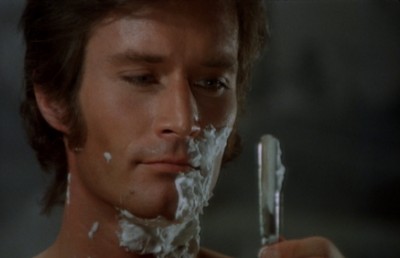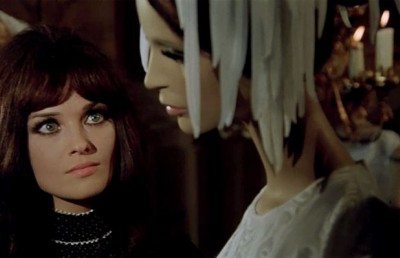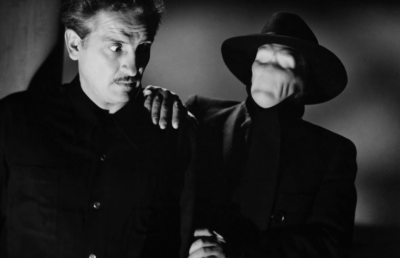Catastrophe (It Was Like a Movie): On The China Syndrome, Twister, The Perfect Storm, Titanic, Deep Impact, World Trade Center, and Contagion
Films give us a common reference point—we can discuss problems and arrive at solutions
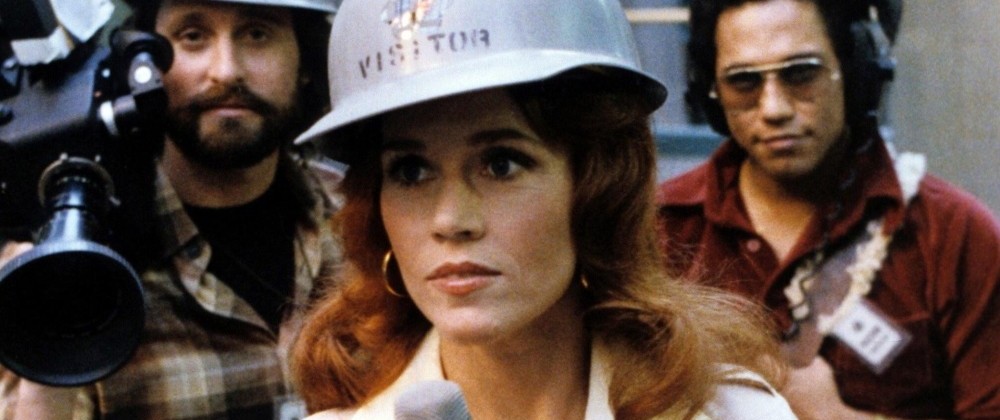
There were several American states, in the mid-west and the south, states in which many tornadoes touched down, turned and turned, and tore through homes and buildings in 2014, obliterating communities. It is hard to think of anyone chasing a tornado, wanting to get near those rotating air columns that come with storms, when so many people fearfully try to avoid that: but chasing tornadoes was the subject of Jan De Bont’s theatrical film Twister (1996), in which Bill Paxton and Helen Hunt played a battling couple who chase storms. While Time magazine’s Richard Schickel and Variety’s Todd McCarthy may have found the film rather coldly formulaic, I thought its situation and perspective unique, and I recall the film as being very engaging, as did the film critics Kenneth Turan in the Los Angeles Times and Mick LaSalle in the San Francisco Chronicle, with LaSalle specifying, “This tornado thriller, set in Oklahoma, is a blast from its first scene, when a farmer, hiding with his family in the cellar, is carried off clinging to the cellar door. He’s taken up like Sabu on a magic carpet—except that he’s upside down and screaming” (May 10, 1996). Of course, the couple at the film’s center, a husband and wife now separated whose dangerous but invigorating work may draw them nearer together, are not mere thrill seekers: they want to understand tornadoes, the fundamental nature and force of tornadoes, so that the knowledge can be used to predict torrential direction and help others. It is that kind of knowledge that saved lives in 2014: because of greater science, technology, and insight—thanks to the National Weather Service and the Doppler radar and multi-media alerts—people were warned about the coming tornadoes and had time to gather food, water, and other supplies and find shelter (and there is increased awareness of the architectural requirements that would help buildings survive the ferocity of the winds). Whereas people used to have only a few minutes to seek safety, they now have hours; and yet, once a storm passes, the wreckage is usually immense—and human fatality is still possible. Even with advanced warning, more than thirty people died in the recent storms, according to an April 29, 2014 Associated Press report by Jeff Amy and Adrian Sainz. Upon reflection of the actual damage, the wrecked homes, downed trees, and scattered detritus, cinema images are remembered and mentioned: in Mississippi, one shocked person talks of how pulverized, how strange, everything looks; and another, Abby Tucker, says, “You see this in movies…You don’t see it in your own backyard.” (Yet, the American Psychological Association has suggested that time heals—with communal support, self-expression, healthy rituals and the resuming of routines, and helping others, while avoiding major personal life decisions.)
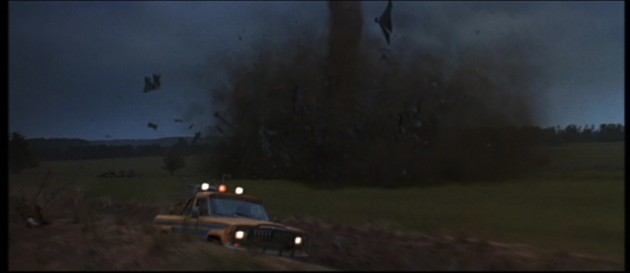
Twister
Catastrophe. It is an agon—an agon: a challenge to body and spirit—with a destructive force beyond ordinary anticipation or immediate ease: accident, calamity, blight, disease, plague, suffering, trouble. Human beings used to have to struggle through shock, pain, and misunderstandings to arrive at a sense of order and insight regarding difficult and overwhelming experience—but after a century of mass culture, in which the imagination of disaster is brought to us again and again, when a catastrophe occurs for the first time in our lives we have a sense of déjà vu. The force of accident or nature or terror in our lives is, at once, both predicted and stunning. The terrible is something we feel we know from memory—thanks to film and television and the internet—even as what is terrible erupts around us, breaking our lives into before and after. There is an intellectual mastery that is paired with an emotional dislocation: our personal experience seems somewhat impersonal.
Writing in a paper “Disasters, A Psychological Perspective,” Margaret Gibbs, Ph.D., and Kim Montagnino, M.A., of Fairleigh Dickinson University, an article for a 2005 higher education conference that is still available in 2014 on the American government’s Federal Emergency Management Agency web site, the authors declare that the understanding of disasters used to be more descriptive than it is now (now, there is more quantitative research); and yet that observers are limited in their understanding by being able to see some of the results of disasters but not what people were like before, an interesting observation: daily life has its rigors. (How much stress were people exposed to before a great misfortune; and how have they changed?) The writers Gibbs and Montagnino specify different kinds of disasters and their effects:
Disasters also vary widely in the amount and the nature of the stress they involve: duration; loss of life; personal injury, or injury to loved ones; property damage; terror; helplessness; gruesome sights, sounds and smells; dislocation from one’s home; availability of social support – all these factors may differ in a flood as contrasted to an earthquake, or between one flood and another, or between one victim’s and another’s experience of the same flood. One special differentiation between types of disaster is the natural vs. the technological, or human-caused, disaster. Natural disasters tend to involve lack of control over natural forces, like wind, that we expect to be uncontrollable, while technological disasters can be less defined, especially if they include toxic exposure, and can involve a loss of control over an area of life in which we expect control, like drinking water (Baum, Fleming, & Davidson, 1983). Terrorism is a special form of technological disaster, and the most recent addition to the typology of disaster (Ursano, Fullerton, & Norwood, 2003).
There are comments by the scholars Gibbs and Montagnino on how gender and ethnicity and social roles—and the sense of responsibility—impact responses to disaster, as well as the significance of the amount of stress and support before, during, and after the event. What is the communal context? Yet for many people individual perception—and the consciousness gained through the senses—remains fundamental; and consciousness of catastrophe very often is connected not first to personal life experience but to cinema—through what has been learned through eyes and ears while watching motion pictures: whether tornadoes in The Learning Tree (1969) or Places in the Heart (1994) or Twister (1996); or trouble on the water as in The Deep (1977), Titanic (1997), The Perfect Storm (2000) or All Is Lost (2013); or films about epidemics, as in Contagion (2011). Films in different genres—melodramas, horror, and science fiction high among them—have given us terrifying visions of human life, past, present, and future.
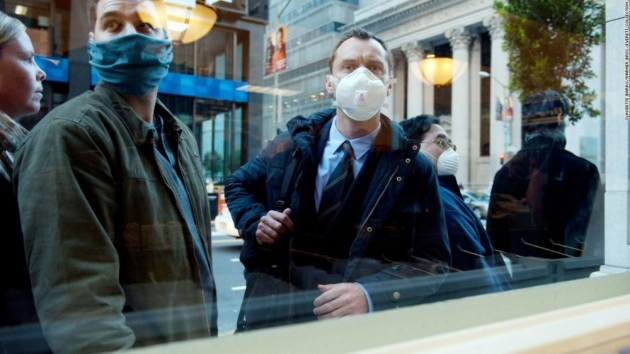
Contagion
Is it perverse that the most frightening and challenging experiences—fire and flood, torture and murder, terrorism and war—can come to us for the first time in our own lives but have the aspect of something already known? For decades we have feared nuclear obliteration, yet if and when it occurs, will some part of us begin to think, “Is that all there is?” What was once not to be imagined has been considered many times: in literature and in cinema. When Japan’s Fukushima nuclear plant had a meltdown in 2011, releasing contaminants in nearby waters, it was frightening; and yet we had been here before—in life and in art. For those with a long memory of the dangers of nuclear power, there was the memory of war—of the use of the atomic bomb against Japan—but there was also the subsequent warning issued by the 1979 James Bridges film The China Syndrome, in which Jane Fonda is an ambitious reporter visiting a nuclear plant with her rebellious photographer, played by Michael Douglas, on a day when an official there, Jack Lemmon, and his staff manage to control an accident that could have been cataclysmic. Writing in The New York Times, the film critic Vincent Canby stated, “The China Syndrome, written by Mr. Bridges with Mike Gray and T.S. Cook, evokes the spectacle of the terrifying things that might happen should there be a lapse in the safety procedures at an electrical generating plant powered by nuclear energy. The time is now and the place is southern California. The film is as topical as this morning’s weather report, as full of threat of hellfire as an old-fashioned Sunday sermon and as bright and shiny and new-looking as the fanciest science-fiction film” (March 16, 1979). The film was thrilling for the impression it gave of how things might go on behind walls that were usually closed to us, the viewing public, the voting citizen, the vulnerable people. It was very effective (one wonders if a film like that, which focused more on character and response than action, would be as potent today, years later). Vincent Canby observed, “There is suspense almost from the film’s start in a television newsroom, and it builds without much letup until the finale,” with Canby relishing the film’s dialogue and believable behavior, and offering special praise for Jane Fonda. In terms of the improbability of lapses in safety, Canby was being optimistic and polite, of course. There had been lapses in safety in nuclear facilities, before and since, as another critic, as Roger Ebert, recalled. “The events leading up to the ‘accident’ in The China Syndrome are indeed based on actual occurrences at nuclear plants. Even the most unlikely mishap (a stuck needle on a graph causing engineers to misread a crucial water level) really happened at the Dresden plant outside Chicago. And yet the movie works so well not because of its factual basis, but because of its human content. The performances are so good, so consistently, that The China Syndrome becomes a thriller dealing in personal values,” wrote Roger Ebert in the Chicago Sun-Times (January 1, 1979). Most significantly, a meltdown would begin only days after Vincent Canby’s article was published: at a commercial nuclear plant in Pennsylvania on Three Mile Island, on March 28, 1979.
In Fukushima: The Story of a Nuclear Disaster by David Lochbaum, Edwin Lyman, Susan Stranahan and the Union of Concerned Scientists (The New Press, 2014), detailed are the history of nuclear plants and their problems, and the March 2011 earthquake and tsunami that preceded the accident at the Fukushima Daiichi nuclear facility. The nuclear reactors’ safety systems began to fail, beginning a multifaceted meltdown, with the explosion of the roof of a containment building being televised around the world. The site’s instruction manual offered no guidance for the occurring problem, suggesting that some lessons—no matter how necessary—are difficult to learn. The plant remains a concern today. What is to be the future of nuclear power and nuclear weaponry?
Fears of what could go wrong in the world and in individual lives, as well as memories of what has gone wrong, have been with us for ages: an inevitable part of human consciousness. Many early films, with classical sources or themes, took catastrophe as a subject, according to The Oxford Dictionary of Film Studies, edited by Annette Kuhn and Guy Westwell (published by Oxford University Press, 2012). One of the first films to show a disaster on the water was a French film of 1898, Collision and Shipwreck at Sea by George Melies. (How to survive a shipwreck? Stay as calm as possible, and ascertain and tend to human damage, find a life raft—debris may do, protect against sun damage and exhaustion—remembering that sweating uses up the body’s water, signal for help, seek land, and find food and water, resisting the drinking of sea water or blood or urine.) Eventually, the big budget disaster films of the 1970s—from Airport (1970) to The Towering Inferno (1974)—would increase their public appeal and theatrical drama with their celebrity casts, while offering the suspect pleasure of seeing many of the famous performers killed off one by one. It may not have been the destruction of civilization but it could seem like the destruction of personal cultural memory. In James Cameron’s Titanic (1997), about the sinking of the great ship, modern confidence and intelligence and a secure class system face several obstacles that do not at first seem significant—an intelligent and seductive young man with a drawing talent; and also an iceberg; two forces of nature that prove formidable to the presumed order. (One film the following year, 1998’s Deep Impact directed by Mimi Leder, would make all almost all order absurd, when a comet comes hurtling toward and against the earth, obliterating countries and civilization).
In time, some disaster films would become more intimate, less spectacular. The Village Voice’s art film critic J. Hoberman may have been bored by Wolfgang Petersen’s expensive year 2000 film The Perfect Storm, starring George Clooney and one of his buddies, Mark Wahlberg, with the actors John Hawkes and Allen Payne, but the film—about decent, earthy, loving men who go out on the boat the Andrea Gail and work hard and find themselves faced with an overwhelming storm, with sheets and sheets of water crashing down—offers the kind of story that is hard to dismiss: the ordinary observer feels as if he or she knows these people, even if he or she does not know them very well (they are the kind of Americans, the kind of people, who keep everything moving for the glittering, smart crowd, making the things and giving the service that form the necessary foundation of the world). The Perfect Storm is based on Sebastian Junger’s book, a true story of the 1991 collision of three storms and a Massachusetts loss, a human loss, of ship and life. The film is about experience more than thought; and that is part of what makes this kind of disaster movie so impressive: you, the viewer, are there. “The film’s best scenes are more or less without dialogue, except for desperately shouted words. They are about men trapped in a maelstrom of overpowering forces. They respond heroically, because they must, but they are not heroes; their motivation is need,” said Roger Ebert of the Chicago Sun-Times (June 30, 2000).
Water, overwhelming water. Our senses are filled by the vision; and our feelings expand—with fear and dread. It is simulation but while we watch it, we find that it is difficult to remember that fact. (The Wachowski siblings’ 1999 film The Matrix might be considered not only a science fiction film but a disaster film, if one considers that finding out that one’s experience is not genuine but is a false, exploitive construction, a simulation: the ultimate disaster for a thinking person who wants to be free. Perhaps all films are simulations that prepare us for life: for betrayal and disappointment and fires and floods and murders and war.) There would be no storms involved, only water, but, more than a decade after the premiere of The Perfect Storm, when a gigantic cruise ship overturned off the coast of Italy (January 2012), and when a Korean ferry capsized killing hundreds of students (April 2014), these were shocking events, but they did not carry as much surprise as one might have expected; and one could imagine them even before seeing the photographs or filmed images of the damaged ships. Still: one heard or saw the news and was angry and wept.
Yet, this effect, this sense of having been here before, has occurred with one of the most unprecedented of events—on September 11. Shortly after the attack on the World Trade Center in Manhattan and the Pentagon building in Washington on September 11, 200l, Neal Gabler, several days later, began his thoughtful September 16 report, “This Time, The Scene Was Real,” with this sentence: “OVER and over Tuesday, after the planes tore through the World Trade Center towers and then the Pentagon, benumbed spectators said the same words: ‘It was like a movie.’” The writer described the images in many films—explosion, crumbling building, shocked witnesses—that we, audiences in the United States but also around the world, have seen through the years: scenes of destruction but also scenes of power: scenes in which reasons, whether personal or political or religious reasons, have been bound to insanity, in which some disturbed person declares, Because of that, I will do this. Neal Gabler wrote, “American films, thanks largely to videotape, now reach every corner of the world and their images colonize the imaginations of virtually everyone—one reason Muslim fundamentalists so hate America.”
Other testimony from The New York Times:
“It was like a movie, except it involved real people, and a real place I knew.”
—Stanley Gazemba, “Those Are Our People,” September 23, 2013, following the Nairobi, Kenya, Westgate Mall attack by Shabab militants, in which more than sixty people died
“Mr. Carroll added: ‘We’ve all seen the movie Titanic, the boat scraping along the side of the glacier? Well, it was just like that.’”
—lawyer Robert Carroll, after a Staten Island struck a pier, killing about ten people, in Christine Hauser’s “Witnesses Say Ship Was Moving Faster Than Usual,” October 15, 2003
“As Doug Green, 17, who has a summer job across the street said, ‘It was like a movie.’”
—reported by Michael Cooper, “Crowds Scramble as Police Kill Gun-Wielding Robbery Suspect,” August 10, 1999
There are more similar statements in the Times, Manhattan’s newspaper, and the international paper of record: there is an earthquake in California, and someone says it was like a movie scene occurring in the background (October 18, 1989). A car crashes into Washington Square Park, a bohemia park built on a cemetery for the poor, the car crashing and wrecking benches, hitting people, killing several; and a witness says that it was like a movie (April 24, 1992). A gas explosion kills four people in Minnesota, and someone describes the debris and dust and says that it was like a movie (December 12, 1998). A plane crashes into a Milan skyscraper and an observer says the same words (April 19, 2002). Films have become a form of communal consciousness for life events, particularly for disaster, whether those disasters are natural or man-made. Films can give us a common reference point—we can discuss these cinematic situations and try to arrive at remedies and solutions; or we can use the likeness of an event to a film as merely a mark of strangeness, for something not to be absorbed—but to be dismissed. Of course, it is important to note that much of the World Trade Center attack seemed like a film because it was: the first airplane’s penetration of a building and its burning were televised live, as was the second plane hitting one of the buildings. On film and video and computer screens, we saw the crash, the burning, and the buildings crumble, scenes played over and over; and theatrical feature films would tell us stories about that day and its aftermath: 25th Hour (2002), The Great New Wonderful (2005), United 93 (2006), World Trade Center (2006), In the Valley of Elah (2007), Lions for Lambs (2007), Reign Over Me (2007), Remember Me (2010), and Zero Dark Thirty (2012).
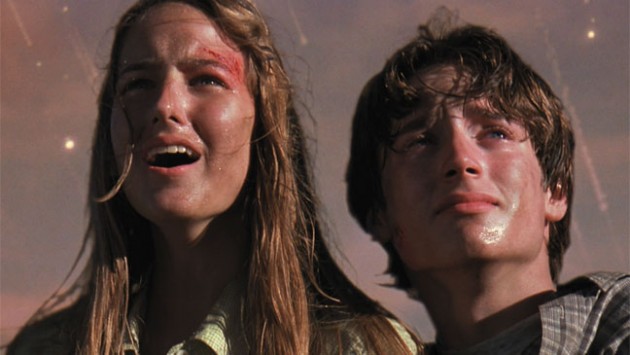
Deep Impact
However, it is important to remember that the World Trade Center attack—and the attack on the Pentagon—became, too soon, symbols, a subject of the imagination, not simply for artists, but for politicians and ordinary citizens: instead of simply identifying the religious fanatics who brought the attacks about, determined and disturbed individuals affiliated with a renegade movement, Al-Qaeda, the violent acts against New York and Washington were identified with evil itself—and evil was identified with Afghanistan and Iraq, two nations that had no official connection to the violent acts. Proposals for war were made and announced; and there were protests around the world against those proposals. Yet, first Afghanistan and then Iraq were invaded, leading to a waste of human lives and national treasure (disaster); leading to abuse of power, to profound immorality, including the torture of military combatants and political prisoners by American government agencies (disaster).
The scholar Peter Brooks was greatly inspired to address the ethics of reading after public disclosure of the post-September 11 George W. Bush administration’s “torture memos,” in which lawyers found ways of justifying abuse of detainees: “I began by evoking the Torture Memos because in that case the disastrous results of not reading—of merely pretending to read while in fact inserting one’s own prejudices and preferred outcomes between the reader and the text—are so clear and so horrible,” Brooks would say in the introduction to The Humanities and Public Life (Fordham University Press, 2014; page 3). Peter Brooks has taught the ethics of reading in courses attended by both students and professors; and he would lead a symposium that became the book The Humanities and Public Life, in which another contributor, Jonathan Lear described his own research on and lasting relationship with a Native American tribe (the Crow), suggesting cultural study, moral enlightenment, and personal responsibility. Jonathan Lear said, “If one can succeed in making an imaginative possibility robust, it can have a profound effect on how we live our lives. For our lives are shaped not just by what we take to be the case, but also by our sense of what is possible. Once an imaginative possibility is opened up, there is room for it to become a practical necessity” (page 111).
Yes, our best possibilities exist with our worst fears; and the World Trade Center and Pentagon attacks made real the threat of religious fanatics, people with primitive minds determined to use contemporary technology against a culture and country for which the militant Islamists felt an essential opposition. That hostility to modern life, thought, and power continues today, with terrorist acts around the world: acts against individuals and against societies. It is the arrival of the other; and the return of the repressed. It is contamination. It is ordinary human conflict. What had been fantasy or fear had become real: the future had arrived with a bang.
Of course, when we have thought about the future, we have thought about our personal future: a job; a husband or wife and children; a home or a particular city. Or we have considered the future as glimpsed in literature and film. “Science fiction films are one of the most accomplished of the popular art forms, and can give a great deal of pleasure to sophisticated film addicts. Part of the pleasure, indeed, comes from the sense in which these movies are in complicity with the abhorrent. It is no more, perhaps, than the way all art draws its audience into a circle of complicity with the thing represented,” wrote Susan Sontag in “The Imagination of Disaster,” an essay on catastrophe and social response in science fiction, published in Commentary magazine in 1965. With references to The Thing from Another World (1951), The Incredible Shrinking Man (1957), The Fly (1958), and The Day the Earth Caught Fire (1962) among other films, Sontag acknowledged the banality and terror of mid-century life, and reminded us of the transforming and exorcising powers of fantasy; and she pointed to how films, with their clichés of knowledge and power, rehearsed scenes of the appearance of the alien or the monster, a creature of formidable domestic or foreign power, and then invasion, threat, scientific analysis, and military response. “The naïve level of the films neatly tempers the sense of otherness, of alien-ness, with the grossly familiar,” Sontag wrote. Fear of actual people and things and facts—such as the impersonality of modern life—are projected onto an alien other. The films’ plots depict individual perception and communal discussion and national response—intelligent and pragmatic responses to extreme violations; although some of the responses are impractical and some can be self-incriminating or self-harming. Sontag’s descriptions are more precise than this summary, and more hilarious for that precision; especially as she notes that, somehow, despite all the confusion and mayhem, there is usually a happy ending. Yet, the ultimate point that Susan Sontag makes is that the films of disaster reveal that there has not been enough thought in society, not enough insight, no believable solutions, regarding the problems that face us: “What I am suggesting is that the imagery of disaster in science fiction films is above all the emblem of an inadequate response.”
Writers have followed in the contemplation of catastrophe. Stephen Keane wrote the book Disaster Movies (Wallflower, 2001), examining modern life, technology, and the breakdown in structures of human existence and movement (and expectation), in diverse films, from The Last Days of Pompeii (1910) to Airport (1970) and The Poseidon Adventure (1972) and The Towering Inferno (1974) to Titanic (1997), films featuring many ships of fools as well as heroism, and destruction as great spectacle, destruction as warning, and destruction as the gratification of the perverse pleasure of seeing discipline, effort, and accomplishment obliterated; and Kirsten Thompson’s book Apocalyptic Dread (State University of NY Press, 2007) draws on established philosophy and new millennial fears in analyzing a variety of genre films—Dr. Strangelove (1964), Earthquake (1974), Carrie (1976), Dolores Claiborne (1995), Strange Days (1995), Independence Day (1996), War of the Worlds (2005), Deep Impact (1998), and The Passion of the Christ (2004)—for their embodiment of moral questioning, social anxieties, international conflicts, past pain, and fearful speculation about the future.
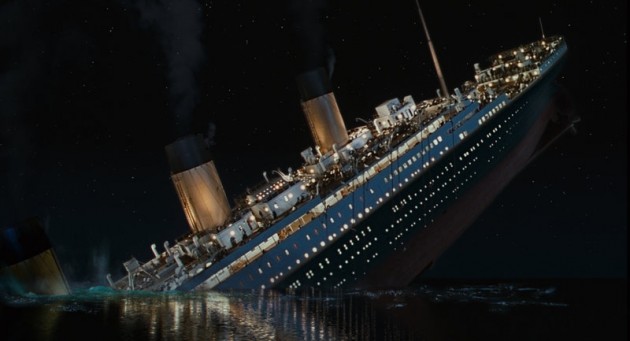
Twister
There are all kinds of films—comedies, dramas, horror, science fiction, and thrillers—that have presented us with scenes of disaster, individual and communal, past, present, and future; and some of the films I have liked for their beauty, entertainment, invention, wit, or pathos or political conviction, have explored catastrophe too: in The Birds (1963), nature rebels; and Bella (2006) is about an unexpected pregnancy, a dreadful fact, though the girl in trouble finds new friends and a solution, while Things We Lost in the Fire (2007) is about a husband-father’s death and a family’s survival, and Antwone Fisher (2002) focuses on the troubles of an abused son, and Rabbit Hole (2010) on a suddenly dead one; and the speculative The Road (2009), inspired by the wisdom one writer-father hoped to give his son, is about a harsh future in a diminished world, and in Attack the Block (2011) young people prove—shrewdly, comically—that they do not need a father’s advice to contend with instinctive, dangerous aliens; whereas the very different Schindler’s List (1993) and In Darkness (2011) give view of the persecution of Jews and also rare heroism, but Edith Stein (1995) presents a woman and philosopher, a Jew who converts to Christianity, and is yet harassed and hounded, and A Mighty Heart (2007) focuses on a Jewish journalist who is kidnapped in Pakistan and the family and friends who try to free him; Shadow Dancer (2012), set in Ireland, and In the Land of Blood and Honey (2011), set in Bosnia, present stories of brutal ethnic clashes; and, in that most promising of nations, All the President’s Men (1976) is about the failure of government and Margin Call (2011) about the failure of the financial industry; and The Shawshank Redemption (1994) is about mistaken imprisonment and lasting friendship. It seems catastrophe can be found almost anywhere.
“The masochism of our current recreations and entertainments cannot be separated from the broader therapeutic culture with its glamorous, garish, and finally abject dogma that in every life there are wounds that need healing; that the unhappiness of life comes down to an avoidable trauma or series of events to investigate and anatomize; and that experience may be reduced to experiences—on the understanding that bad experiences often happen early and always occur as side effects rather than as signs of inveterate character. These beliefs, in their gathered force, exhibit the corruption of a truth about personal freedom. They aim to divide the dignity of the person from the pathos of responsibility. Indeed, among the leading purposes of the therapeutic culture is the giving of assurance to the morally helpless,” wrote David Bromwich in “How the Publicity Makes People Real” in his book Moral Imagination (Princeton University Press, 2014; page 244-245), a great collection of essays surveying American history and literature. Bromwich was writing about the impulse many people have to confess, to share their private lives and personal pains, but his insight stretches to include the kind of culture we produce and enjoy, works of suffering.
In Contagion, the 2011 Steven Soderbergh film, there is a different kind of catastrophe, but a recognizable disaster, one of contamination and disease: what the New Yorker’s David Denby called “Steven Soderbergh’s brilliant movie about the grimmest subject imaginable: a pandemic that kills millions of people in a few months” (September 19, 2011). One sees the world, rich and poor, connected through networks of commerce and communication and through death. Death is faced with courage and generosity and imagination and strength by some of the film’s characters, as in the lives of some of the people we know. David Denby had another perception: “Contagion is, of course, a 9/11-anniversary movie, though probably not one that the public was expecting,” suggesting the intricacy of civilization—its complexity—can be the roots of its destruction. Of course, many people see plagues as metaphysical: as signs of spiritual ruin—and whatever illness or trouble occurs seems like the worst of times, the last days for mankind; forgetting that disasters occur every day, to someone somewhere. That knowledge of fatal possibility, probability, and accomplished fact is repressed or ignored until a catastrophe happens to us or near us—and then one of us says, “It was like a movie”—or a more astute historian reminds us, “This has happened before. This is life.”
(Article submitted May 8, 2014)
Related Link: Electing Democrats or Demagogues


